Complete Solutions to Comprhension of chapter CAPACITOR AND CAPACITANCE of Class 12 book with complete answers and questions
| Class 12 | PHYSICS |
| Chapter | CAPACITOR AND CAPACITANCE |
| CENGAGE PHYSICS | Comprhension |
| Number Of Questions | 35 |
| Academic Year | 2023-24 |
Shows two capacitors in series, the rigid central conducting section of length `b` being movable vertically.
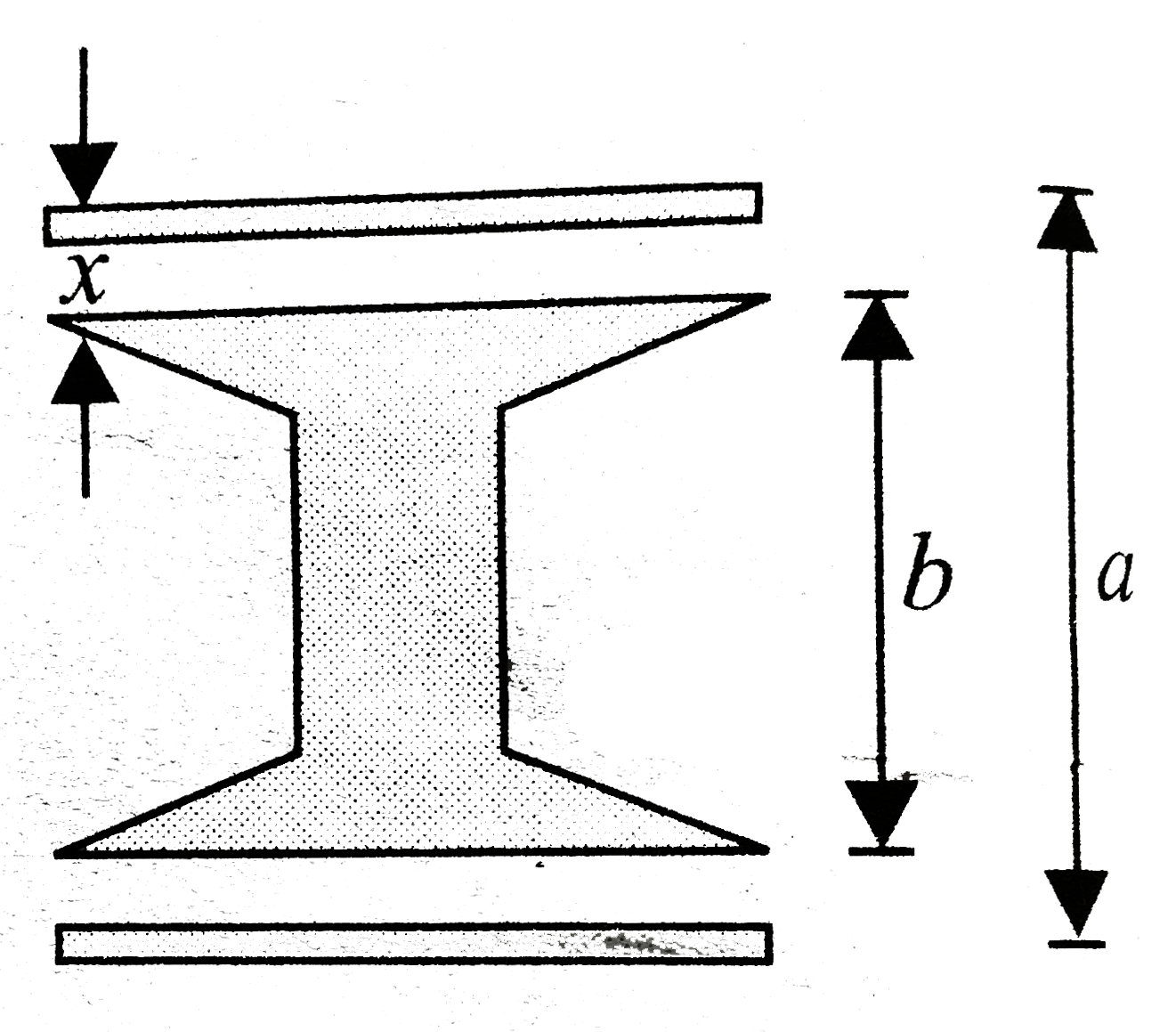 .
.
The equivalent capacitance of the given structure is .01:39View Solutionshows two capacitors in series, the rigid central conducting section of length `b` being movable vertically.
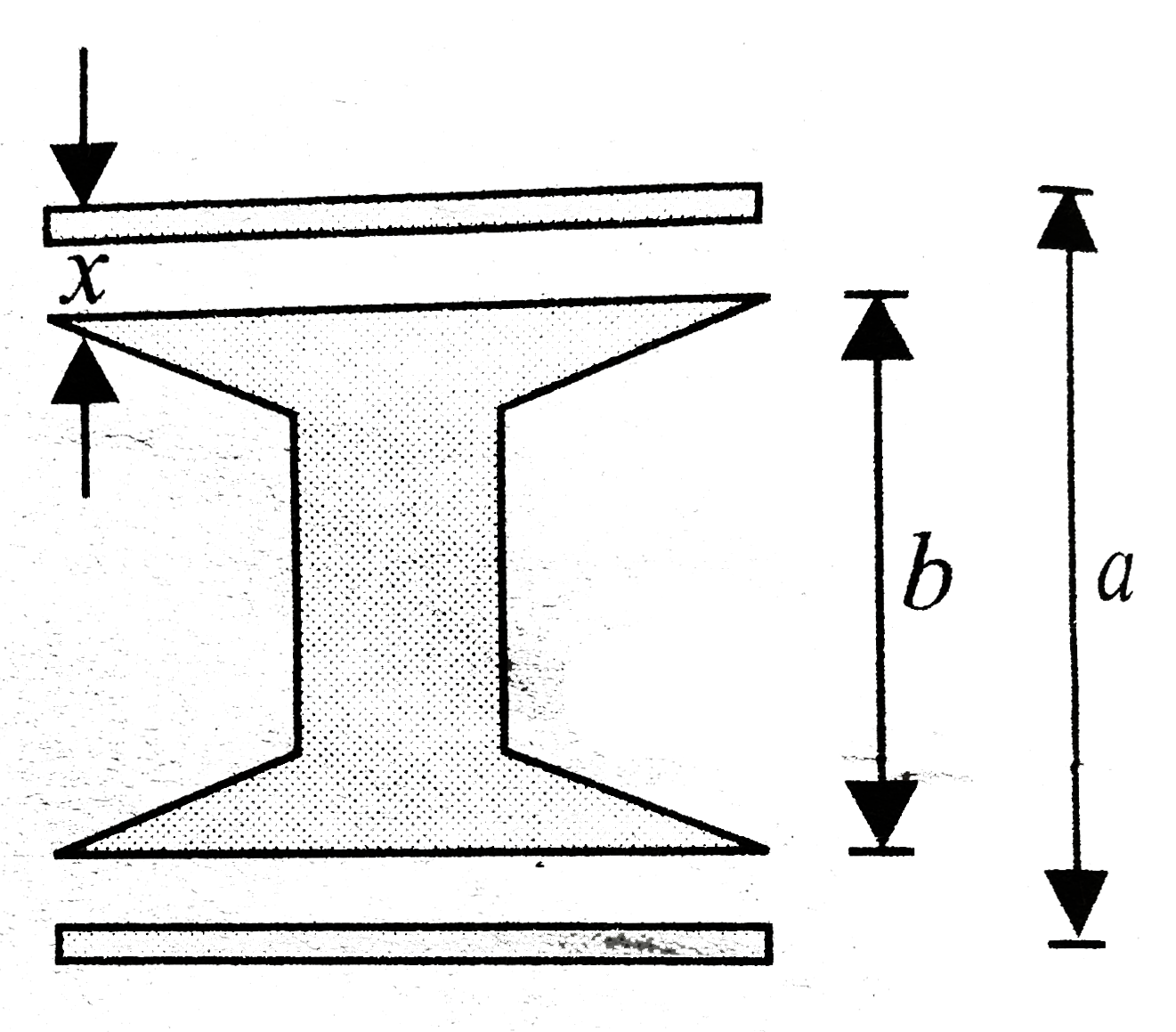 .
.
If the potentials of the upper and lower plates are `V_(1)` and `V_(2)` respectively, then potebtial of rigid segid secton is.03:37View SolutionA `1muF` capacitor and a `2µF` capacitor are connected in series across a `1200 V` supply line.
a. Find the charge on each capacitor and the voltage across them.
b. The charged capacitors are disconnected from the line and from each other and reconnected with terminals of like sign together. Find the final charge on each and the voltage across them.07:15View SolutionA `1muF` capacitor and a `2µF` capacitor are connected in series across a `1200 V` supply line.
a. Find the charge on each capacitor and the voltage across them.
b. The charged capacitors are disconnected from the line and from each other and reconnected with terminals of like sign together. Find the final charge on each and the voltage across them.07:15View SolutionIn the arrangement shown in in the switch `S` is , find
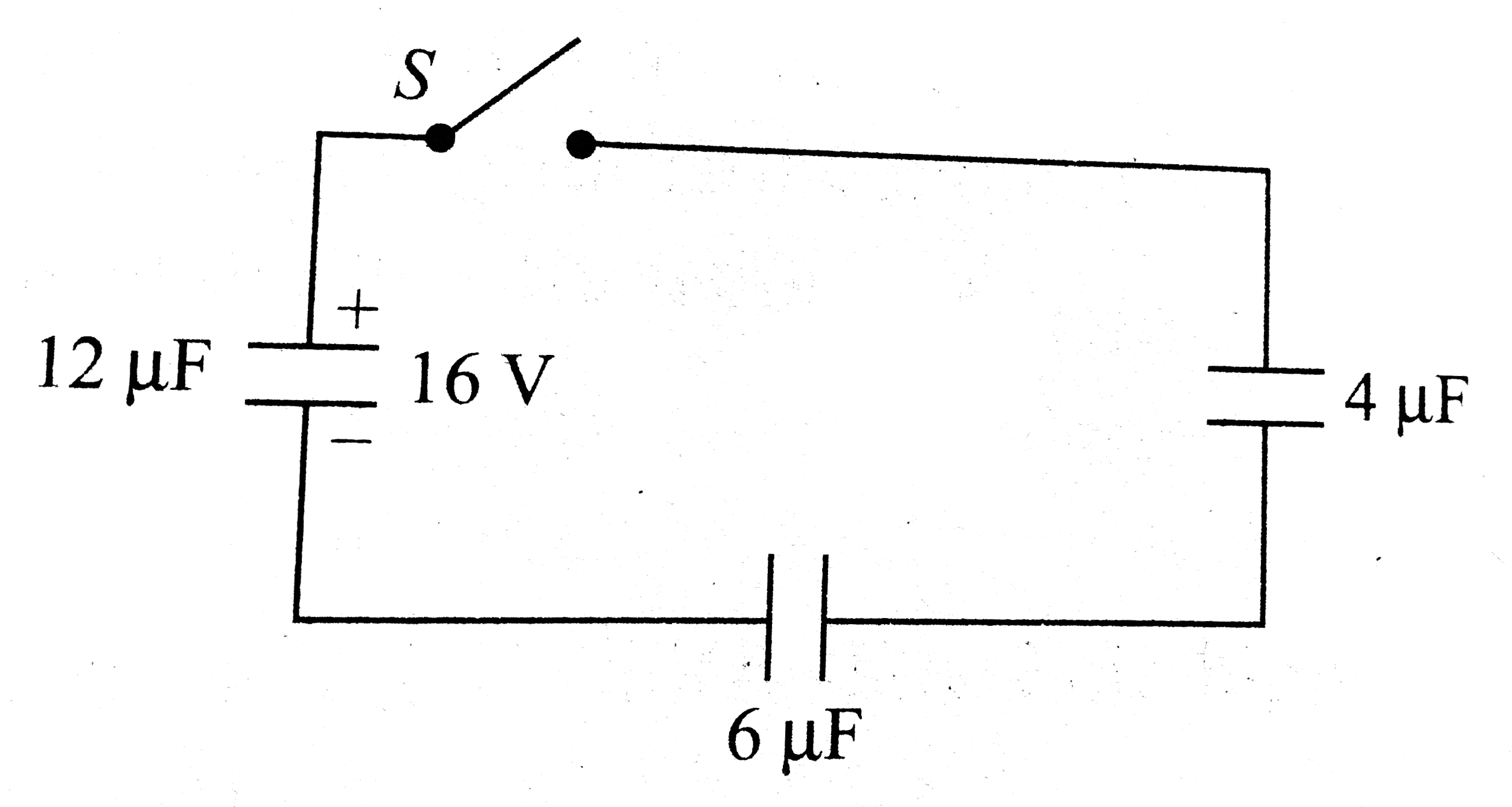
the final charge on the `6 mu F` capacitor02:21View SolutionIn the arrangement shown in , the switch `S` is find
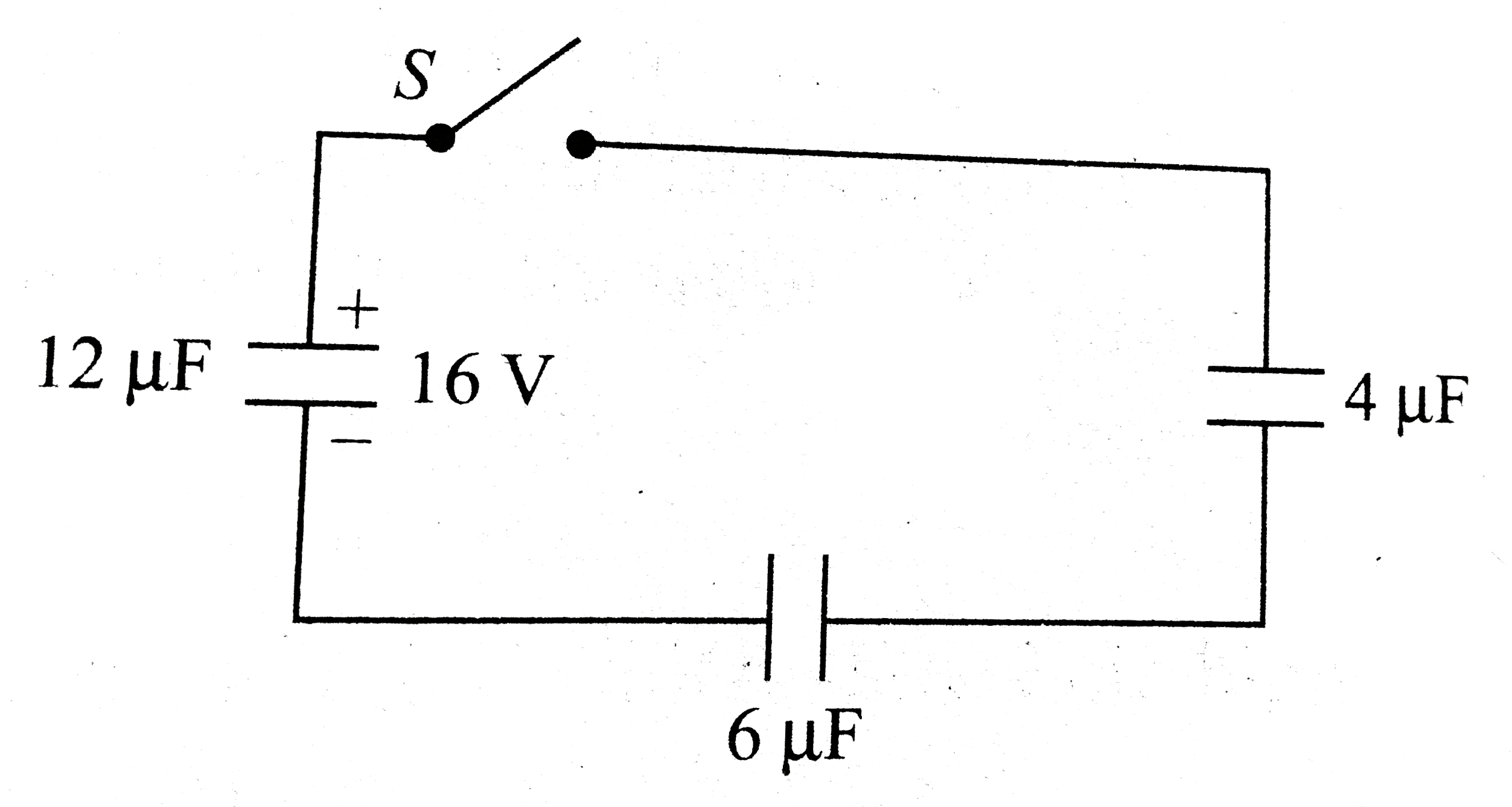 the final potential difference across the `4 mu F` capacitor01:56View Solution
the final potential difference across the `4 mu F` capacitor01:56View SolutionIn the arrangement shown in, When the switch S is closed, find
 .
.
the final potential difference across the `12 muF` capacitor.02:29View SolutionEach plate of a parallel plate air capacitor has area `S=5xx10^(-3) m^(2)` and the distance between the plates is `d=8.80 mm`. Plate A has positive charge `q_(1)=+10^(-10) C`, and plate B has charge `q_(2)=+2xx10^(-10) C`. A battery of emf `E=10 V` has its positive terminal connected to plate A and the negative terminal to plate B. (Given `epsilon_(0)=8.8xx^(12) Nm^(2) C^(-2))`.
Charge supplied by time the battery is .02:24View SolutionEach plate of a parallel plate air capacitor has area `S=5xx10^(-3) m^(2)` and the distance between the plates is `d=8.80 mm`. Plate `A` has positive charge `q_(1)= +10^(-10) C`, and plate `B` has charge `q_(2)=+2xx10^(-10) C`. A battery of emf `E=10 V` has its positive terminal connected to plate `A` and the negative terminal to plate `B`. (Given `epsilon_(0)=8.8xx10^(12) Nm^(2) C^(-2))`.
Energy supplied by the battery is.03:44View SolutionEach capacitor has cpacitance `C`.
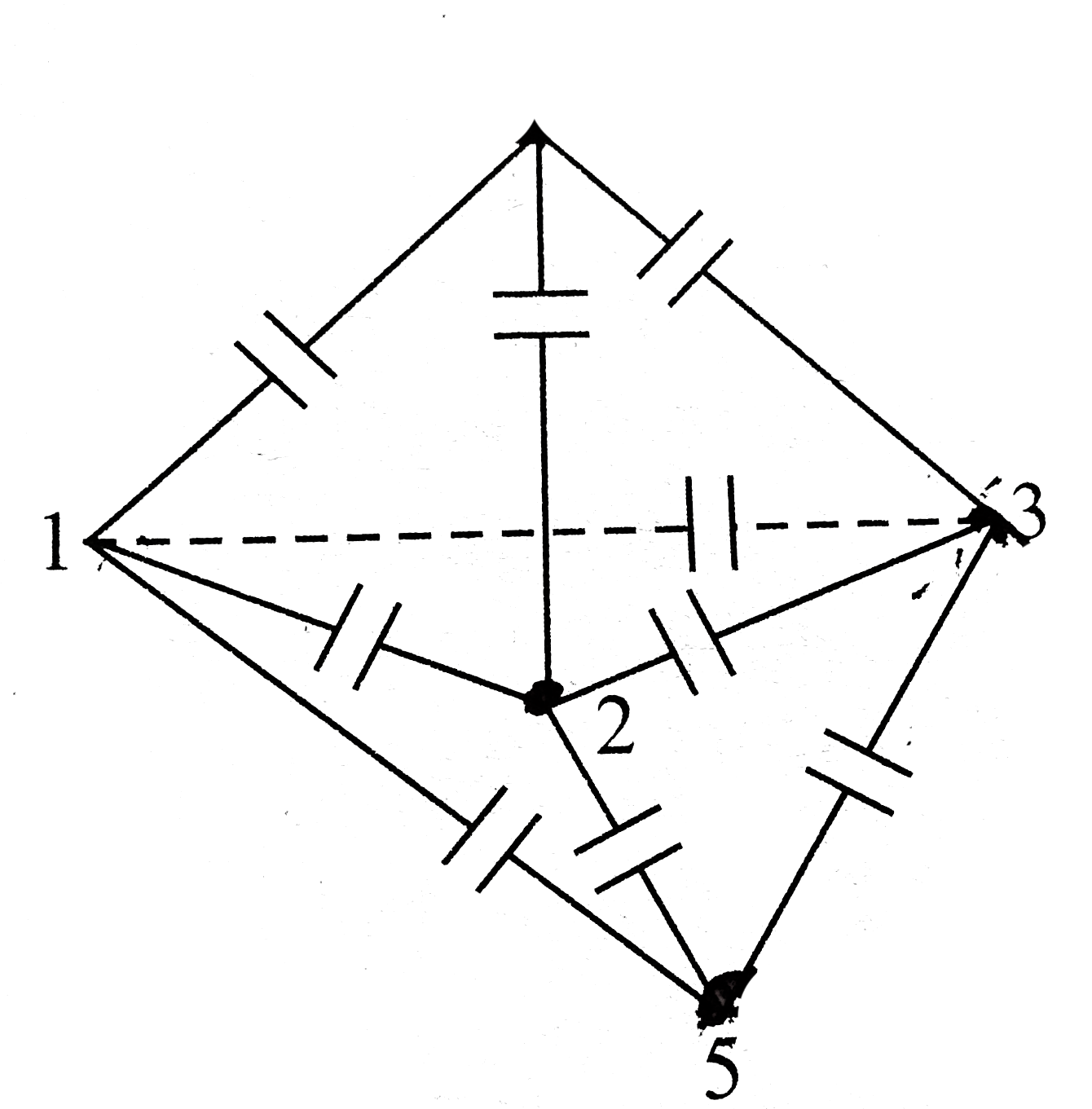 .
.
The equivalent capacitance between `4` and `5` is .01:39View SolutionEach capacitor has capacitance C.
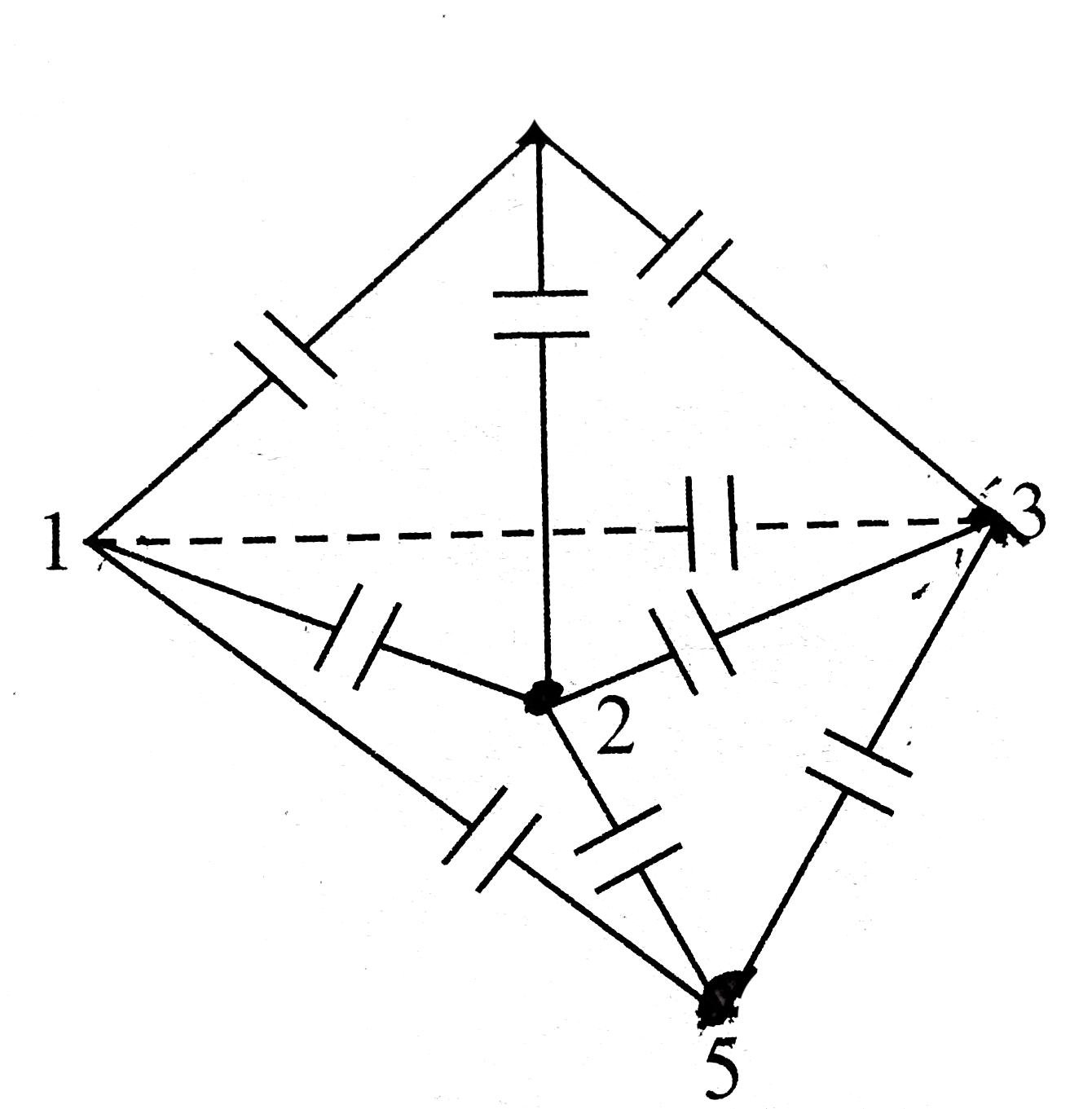 .
.
The capacitance between `1` and `3` is.01:53View SolutionConsider
` .
.
The charge appearing is `C_(2)` is.01:14View SolutionConsider
 .
.
The potential difference `V_(A)-V_(B)` is.View SolutionConsider
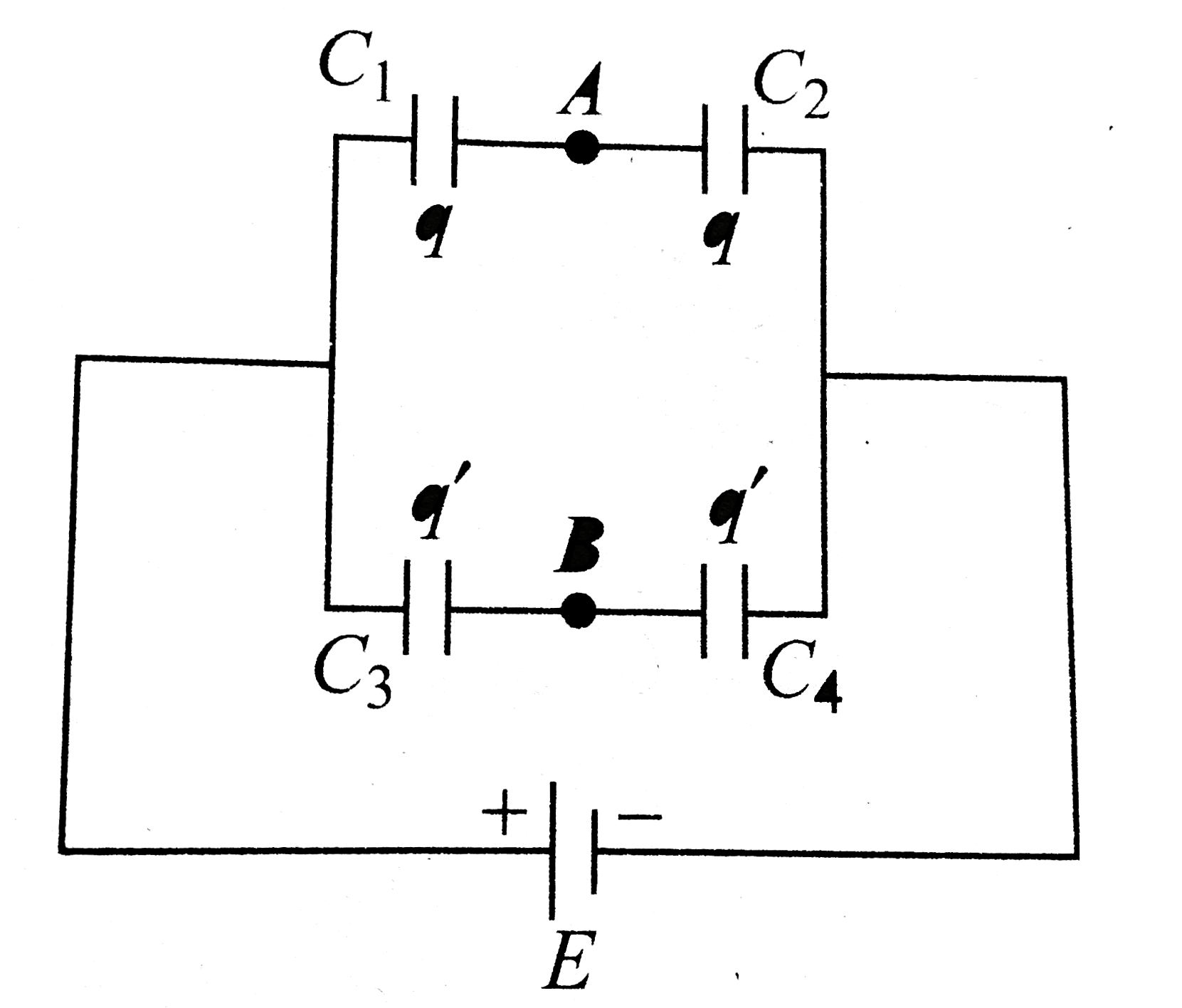 .
.
The condition for which the potential difference between A and B is zero is.03:21View SolutionIn each capacitance `C_(1)` is `6.0 muF`, and each capacitance `C_(2)` is `4.0 muF`.
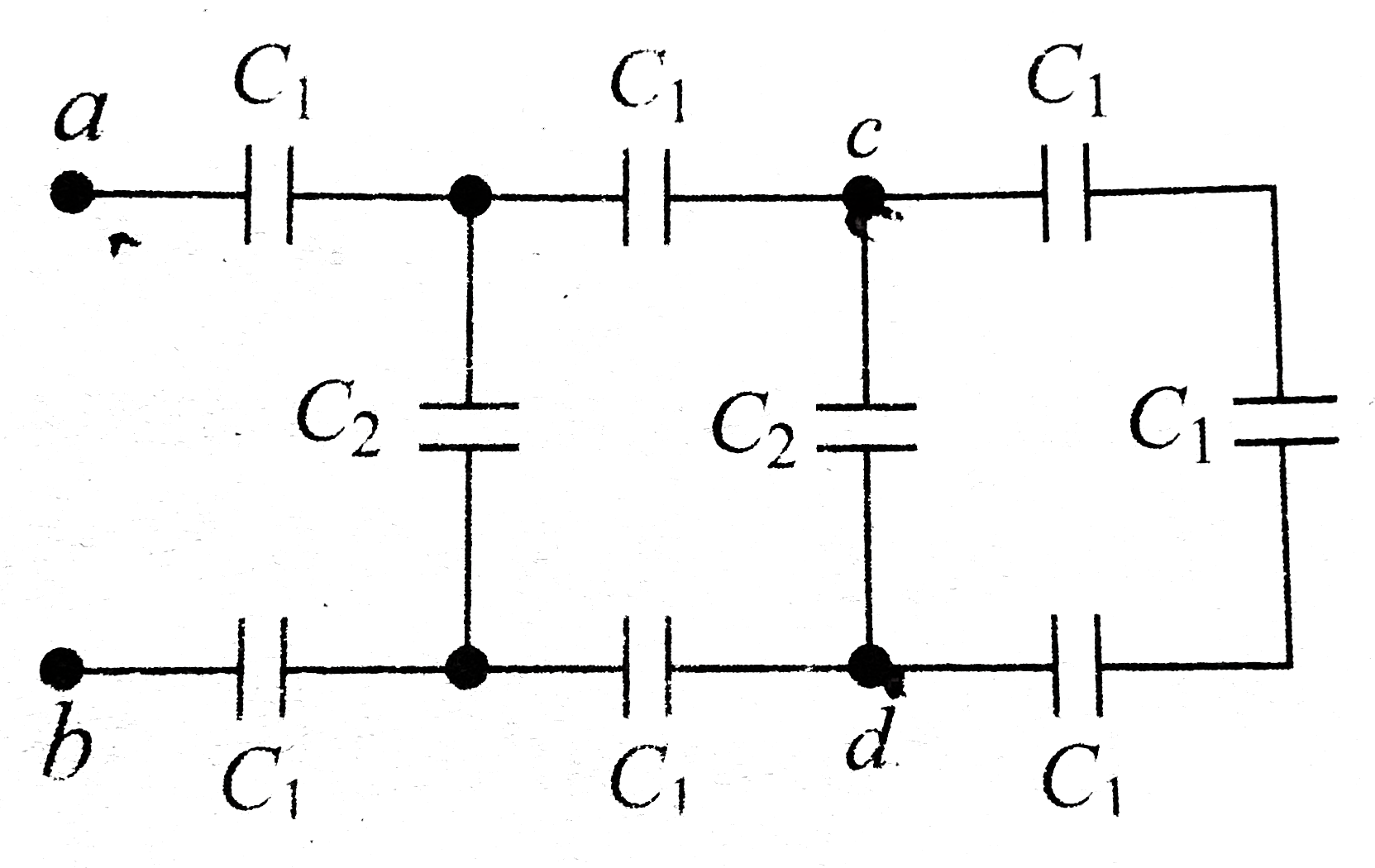 .
.
The equivalent capacitance of the netwok between ponts a and b is.02:11View SolutionIn each capacitance `C_(1)` is `6.0 muF`, and each capacitance `C_(2)` is `4.0 muF`.
 .
.
The charge on `C_(1)` nearest to `a` when `V_(ab)=420 V` is.02:23View SolutionIn each capacitance `C_(1) is 6.0 muF`, and each capacitance `C_(2)` is `4.0 muF`.
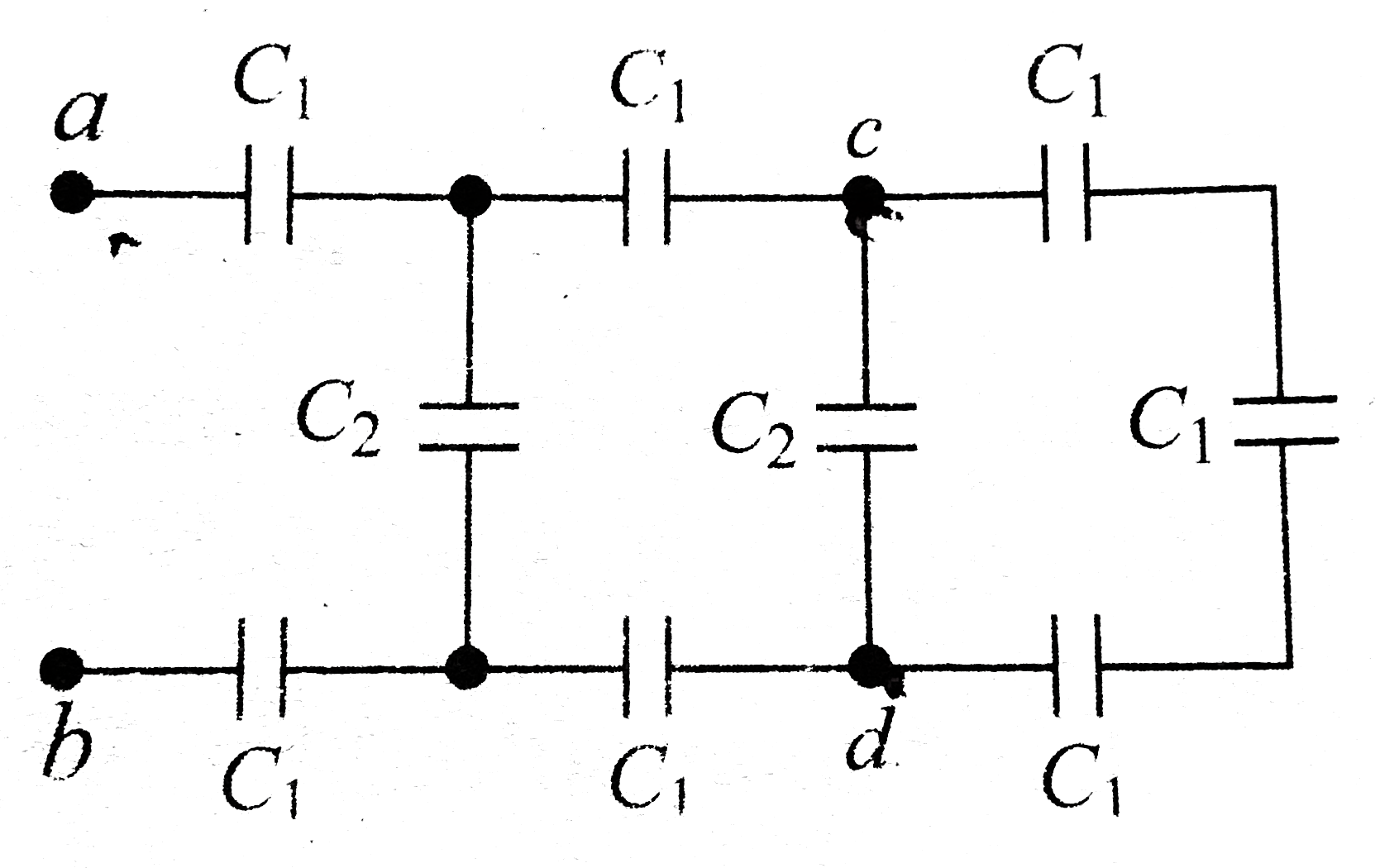 .
.
With `420 V` across a and b the value of `V_(c)-V_(d)` is.02:55View SolutionCondsider
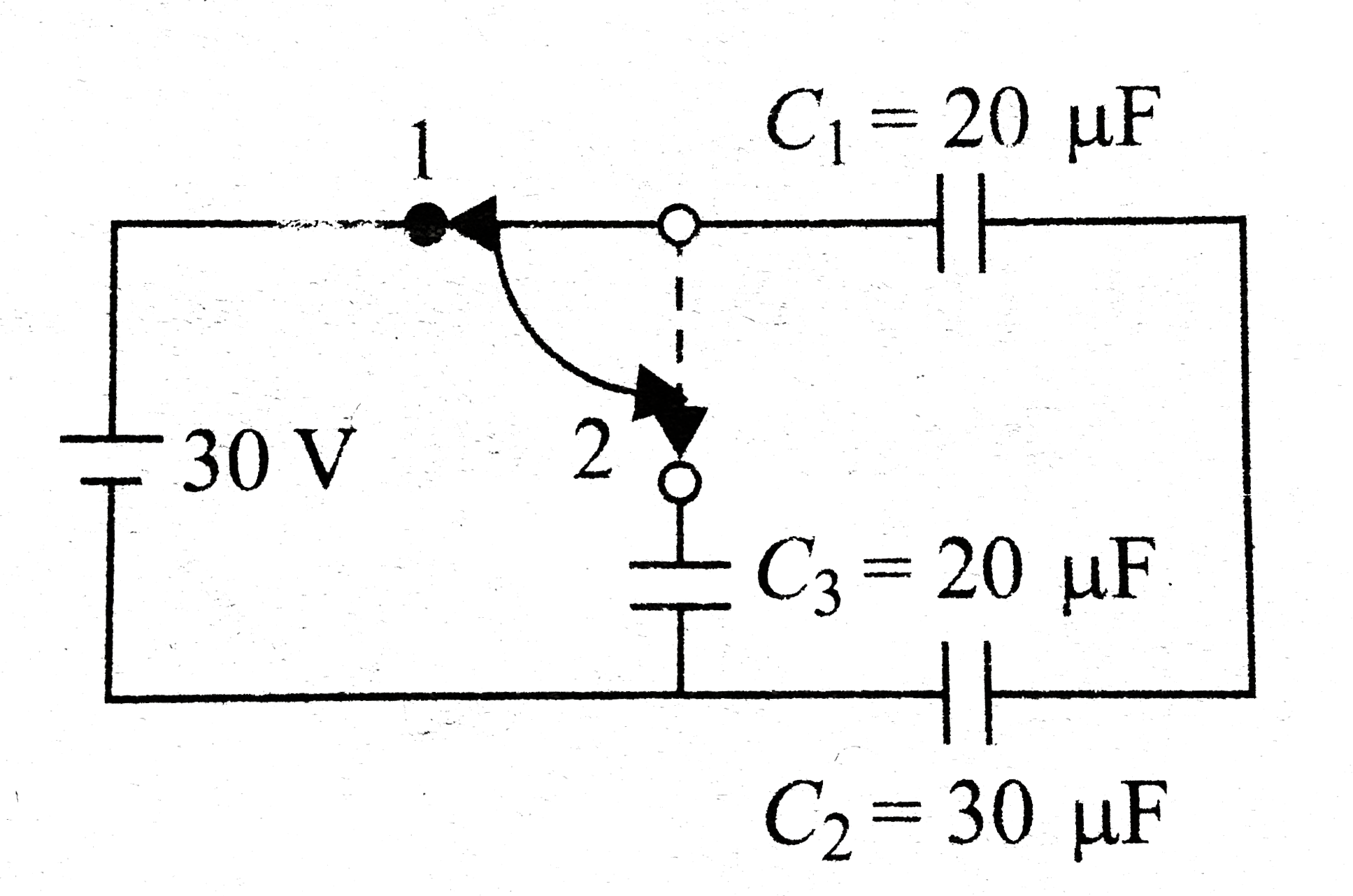 .
.
In the circuit shown is the switch can be shifted to positions `1` and `2` The charge on capacitor `C_(1)` when the switch is at position `1` is.01:45View SolutionCondsider
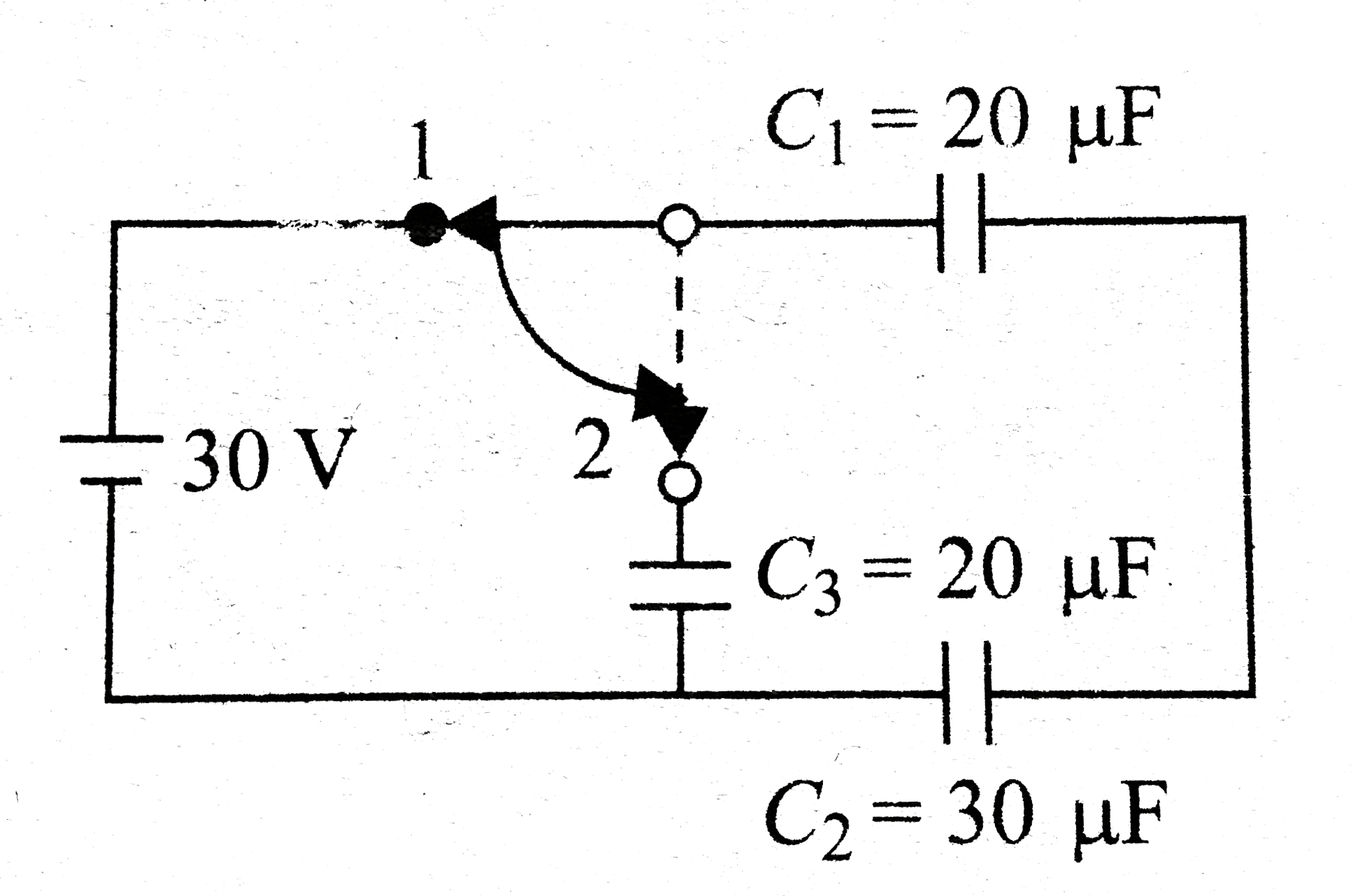 .
.
Now the switch is shifted to position `2`. The charge appearing on capacitor `C_(3)` is`03:18View SolutionCondsider
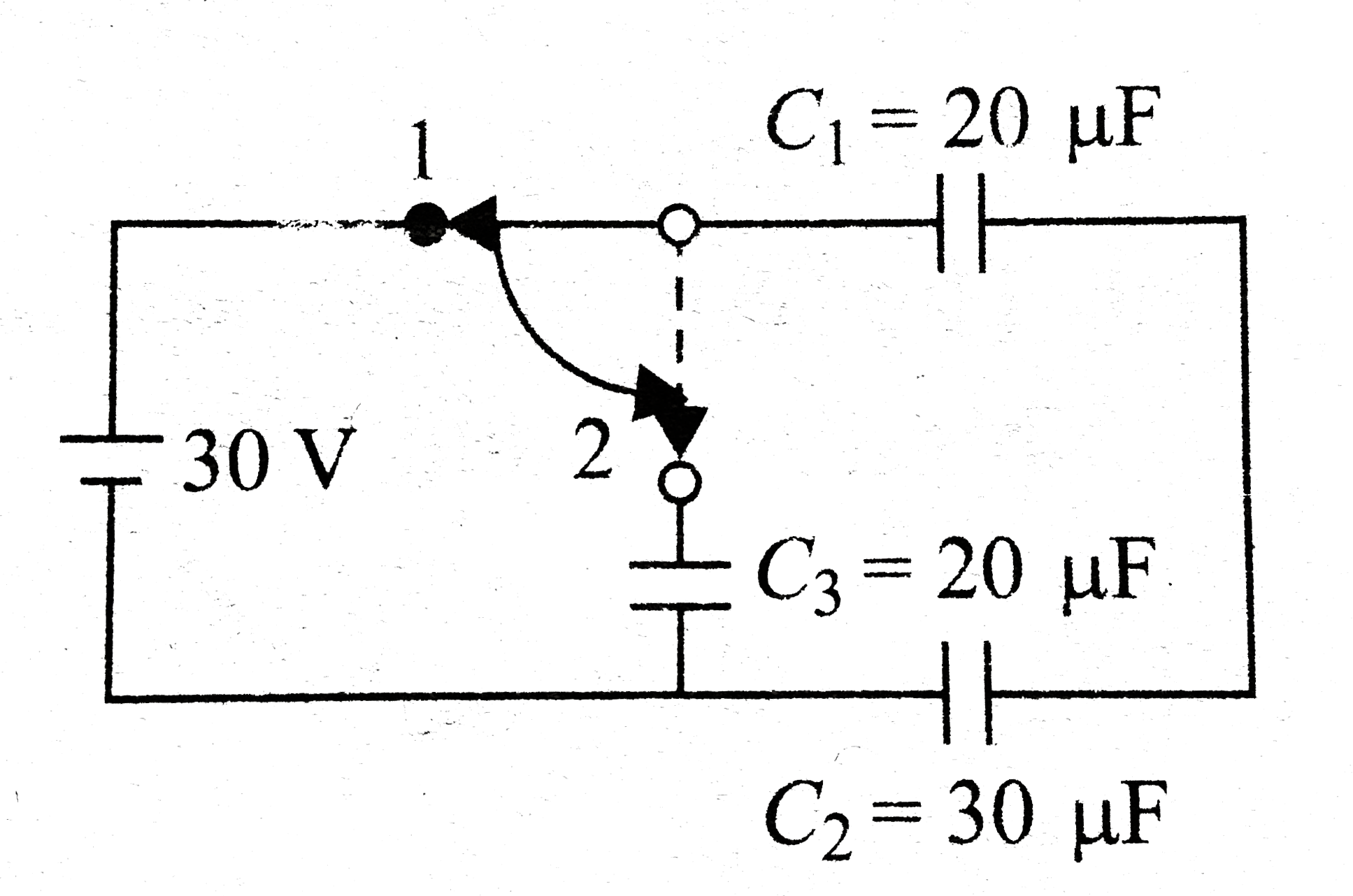 .
.
The charge on capacitor `C_(1)` is.04:19View SolutionFor the system shown in capacitance is `C` The left plate is given a charge `Q_(1)` and the is closed.
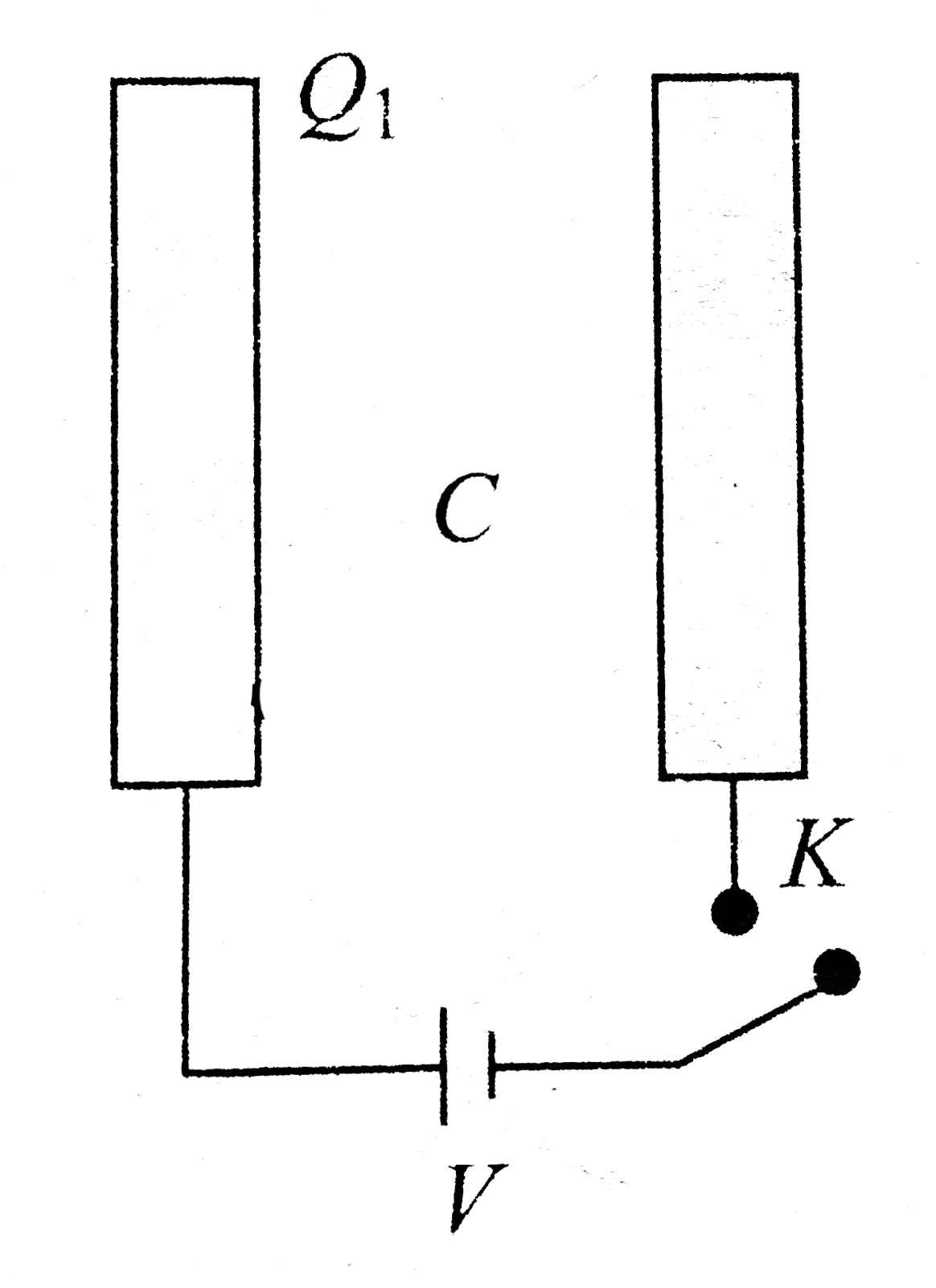 .
.
Find the amount of charge that will flow through the battery before the steady state is achieved.01:53View SolutionFor the system shown in capacitance is `C` The left plate is given a charge `Q_(1)` and the is closed.
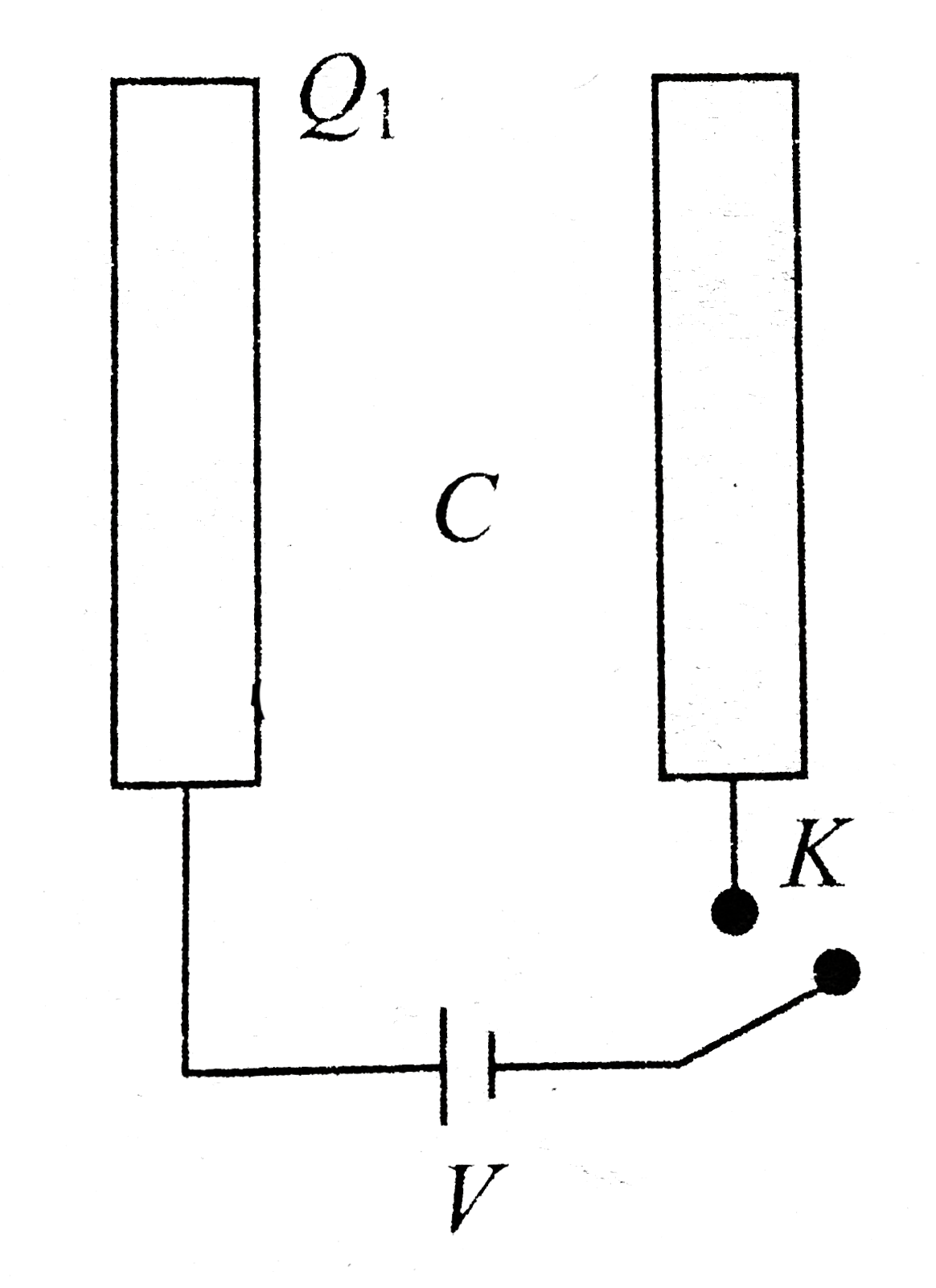 .
.
Find the charge appearing on the inner face of the left plate.01:42View SolutionConsider the circuit shown is after switch S is closed.
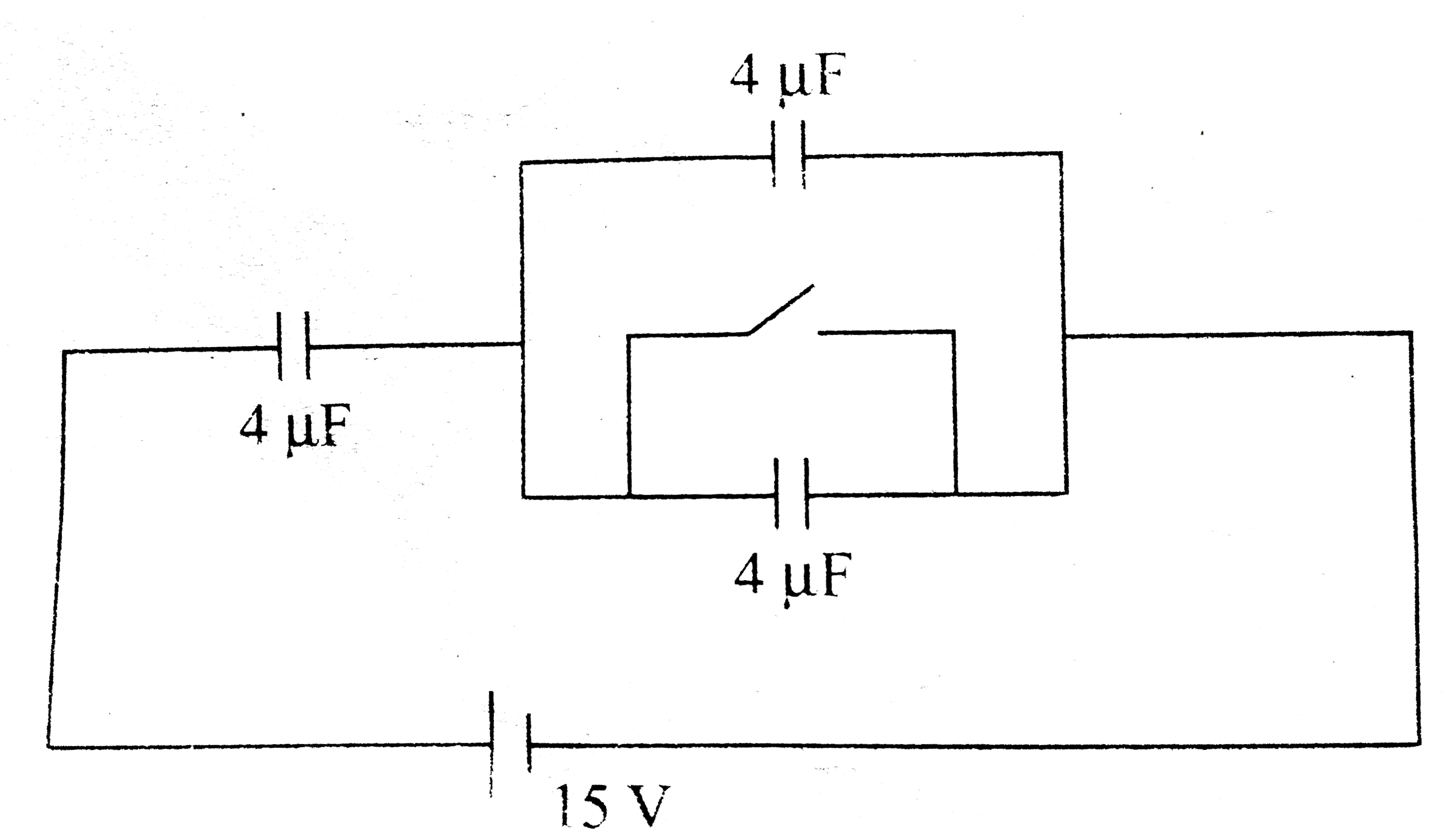
What amount of charge will flow through the battery ?View SolutionConsider the circuit shown is after switch S is closed.
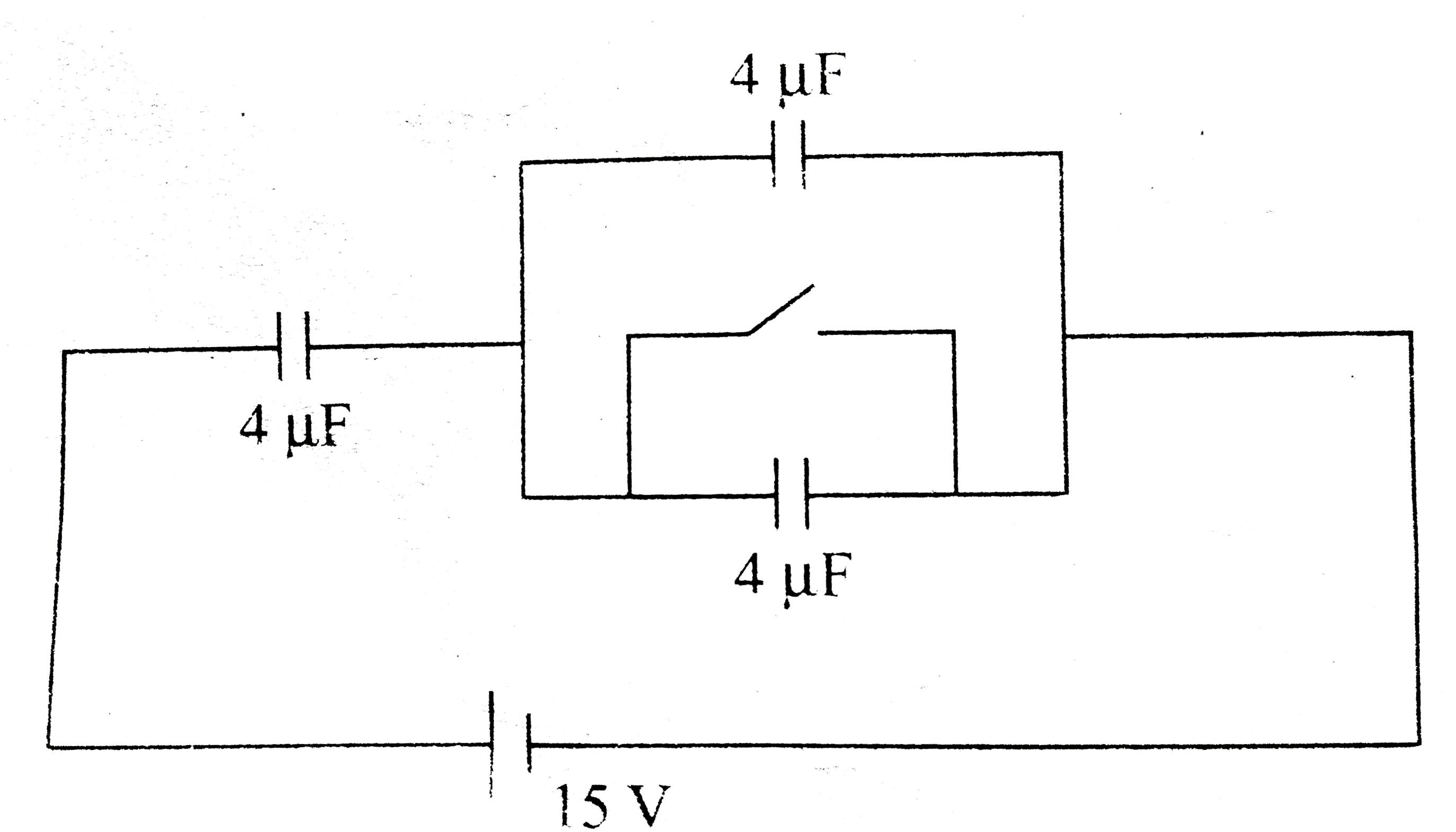
What amount of charge will flow through the switch?10:24View SolutionTwo capacitors of capacity `6 muF` and 3 muF` are charge `100 V` and `50 V` separately and connected as shown in Now all the three switches `S_(1),S_(2)`, and `S_(3)` are closed.
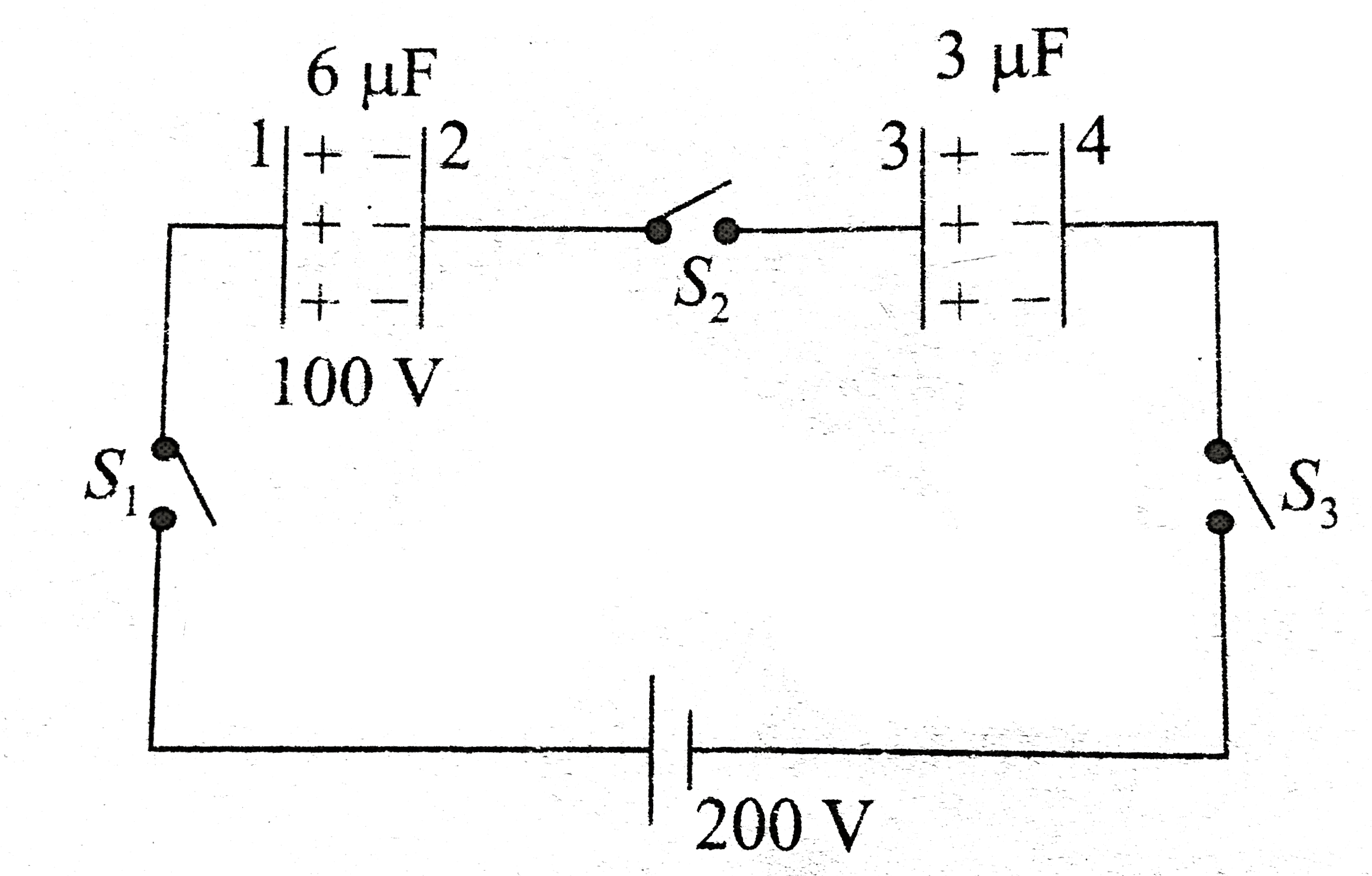
Which plates form an isolated system?02:11View SolutionTwo capacitors of capacity `6 muF` and `3 muF` are charge `100 V` and `50 V` separately and connected as shown in (Fig.4.201.) Now all the three switches `S_(1),S_(2)`, and `S_(3)` are closed.
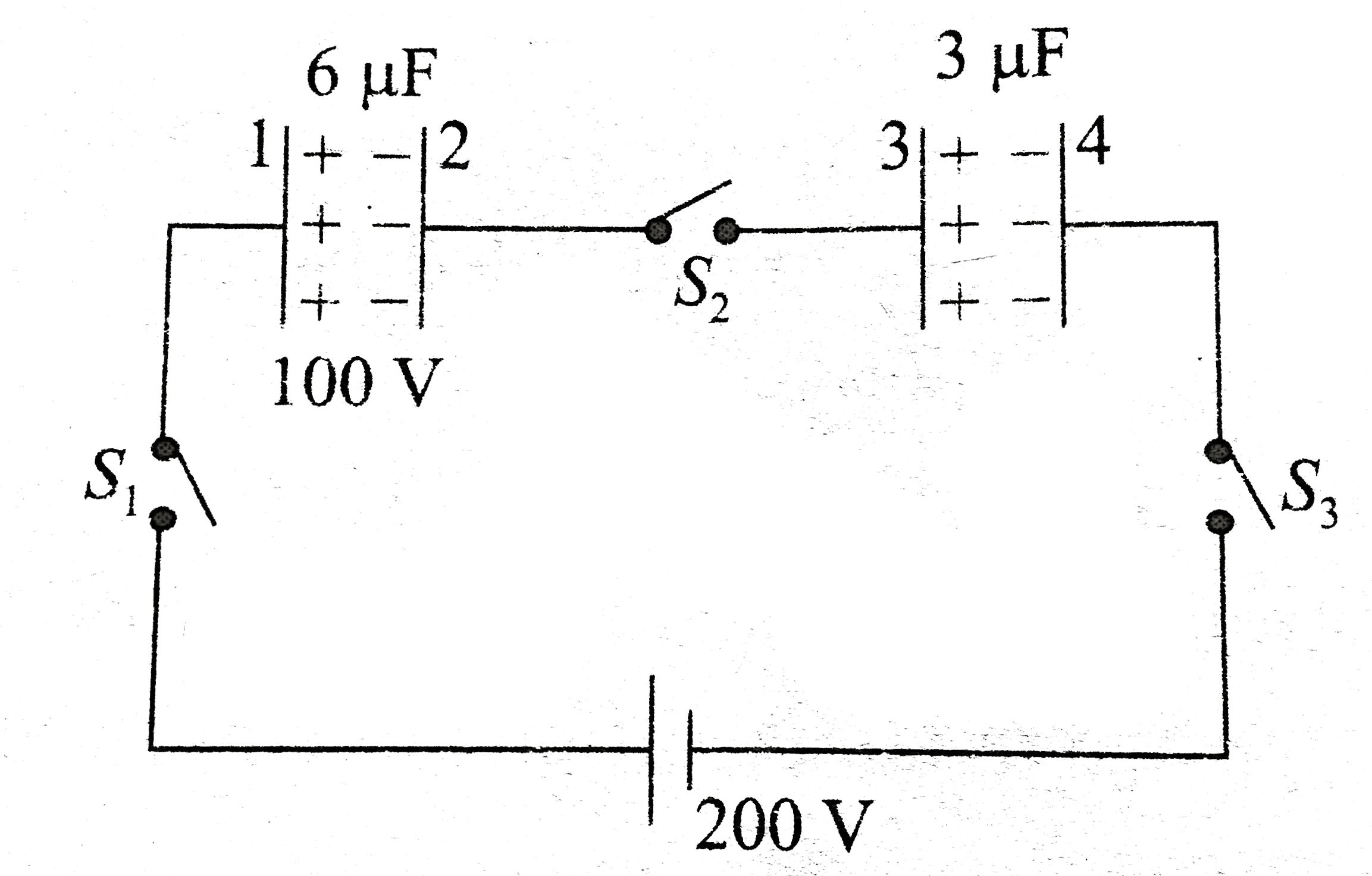
Charge on the `6 muF` capacitor in steady state will be.02:42View SolutionTwo capacitors of capacity `6 muF` and `3 muF` are charge `100 V` and `50 V` separately and connected as shown in Now all the three switches `S_(1),S_(2)`, and `S_(3)` are closed.
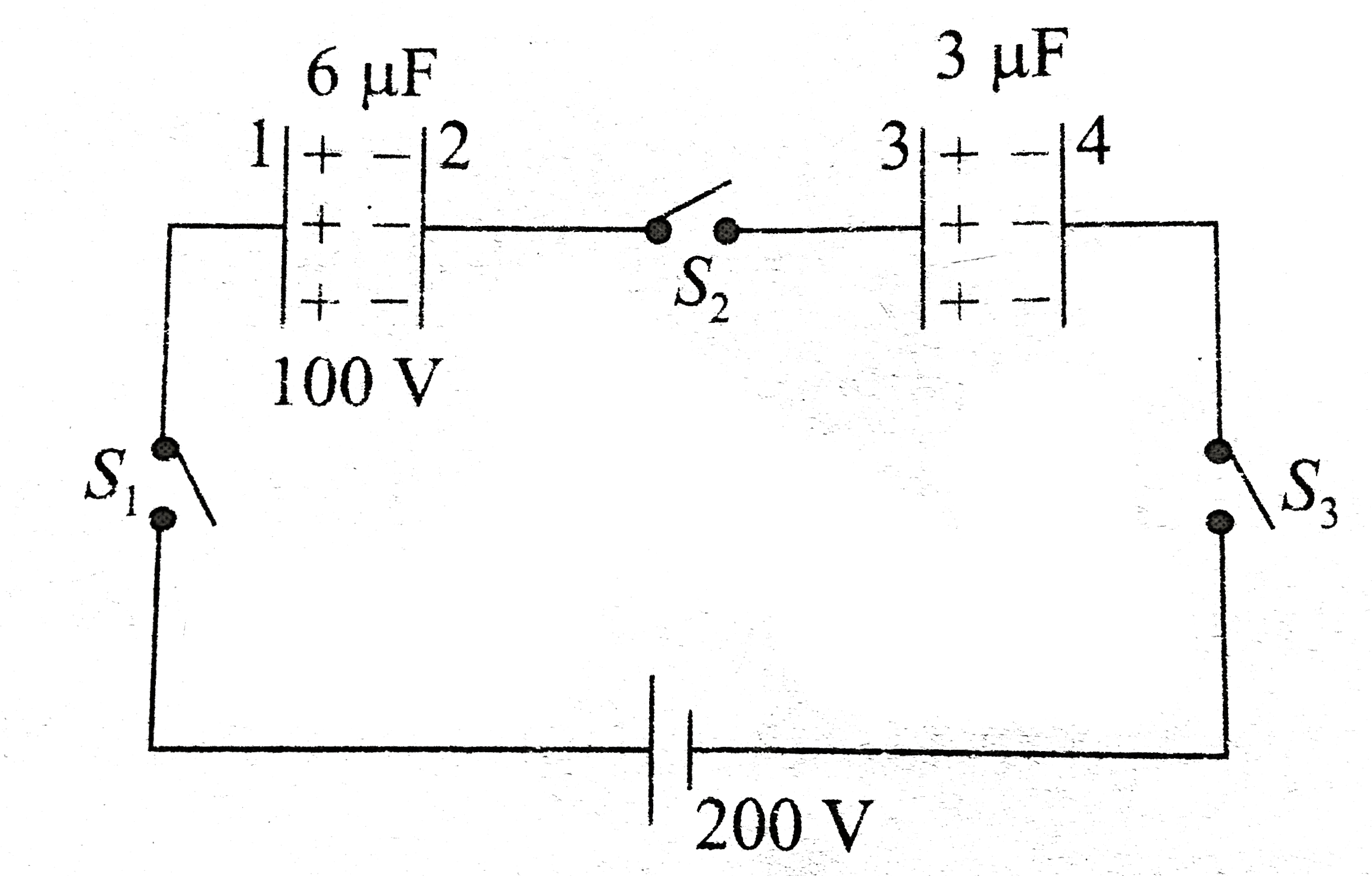
Charge on the `3 muF` capacitor in steady state willl be.03:10View SolutionTwo capacitors of capacity `6 muF` and `3 muF` are charge `100 V` and `50 V` separately and connected as shown in Now all the three switches `S_(1),S_(2)`, and `S_(3)` are closed.

Which plates form an isolated system?02:11View SolutionThe given circuit shows an arrangement of four capacitors. A potential difference `30 V` is applied across the combination. It is observed that potentials at connected between `A an dB` differ by `5 V`. Also if a conducting wire is connected between `A and B`, electrons will flow from `A` to `B`. Of course, we have bot actually connected any wire between `A and B`, we have described only an `if` situation. Answer the following question.
 .
.
Potential difference across `C_(4)` is.03:28View SolutionThe given circuit shows an arrangement of four capacitors. A potential difference `30 V` is applied across the combination. It is observed that potentials at connected between A and B differ by `5 V`. Also if a conducting wire is connected between A and B, electrons will flow from `A` to `B`. Of course, we have bot actually connected any wire between `A and B`, we have described only an `if` situation. Answer the following question.
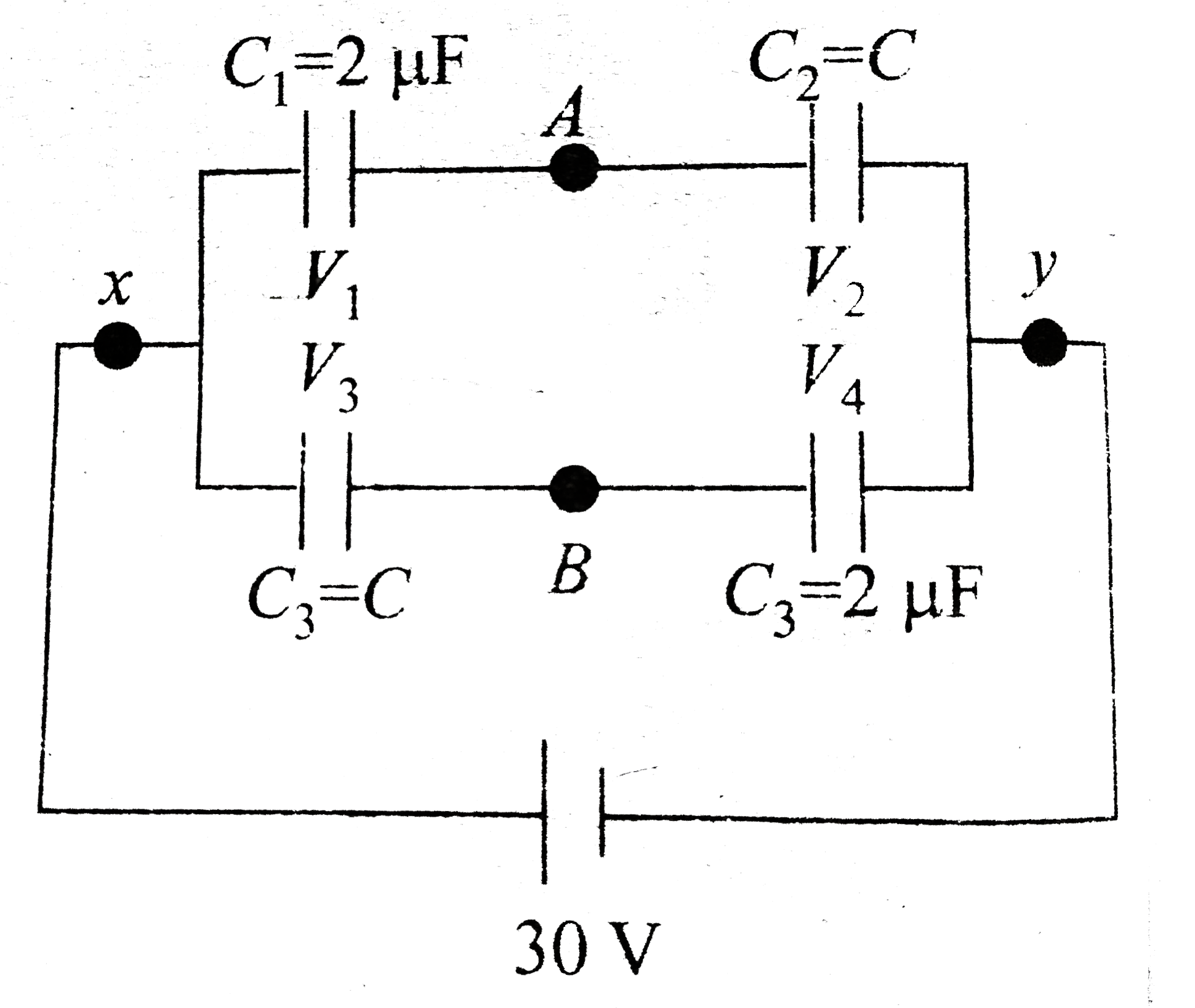 .
.
Equivalent capacitor between `x` and `y` is.View SolutionThe given circuit shows an arrangement of four capacitors. A potential difference `30 V` is applied across the combination. It is observed that potentials at connected between `A` and `B` differ by `5 V`. Also if a conducting wire is connected between `A` and `B`, electrons will flow from `A to B`. Of course, we have bot actually connected any wire between `A` and `B`, we have described only an if situation. Answer the following question.
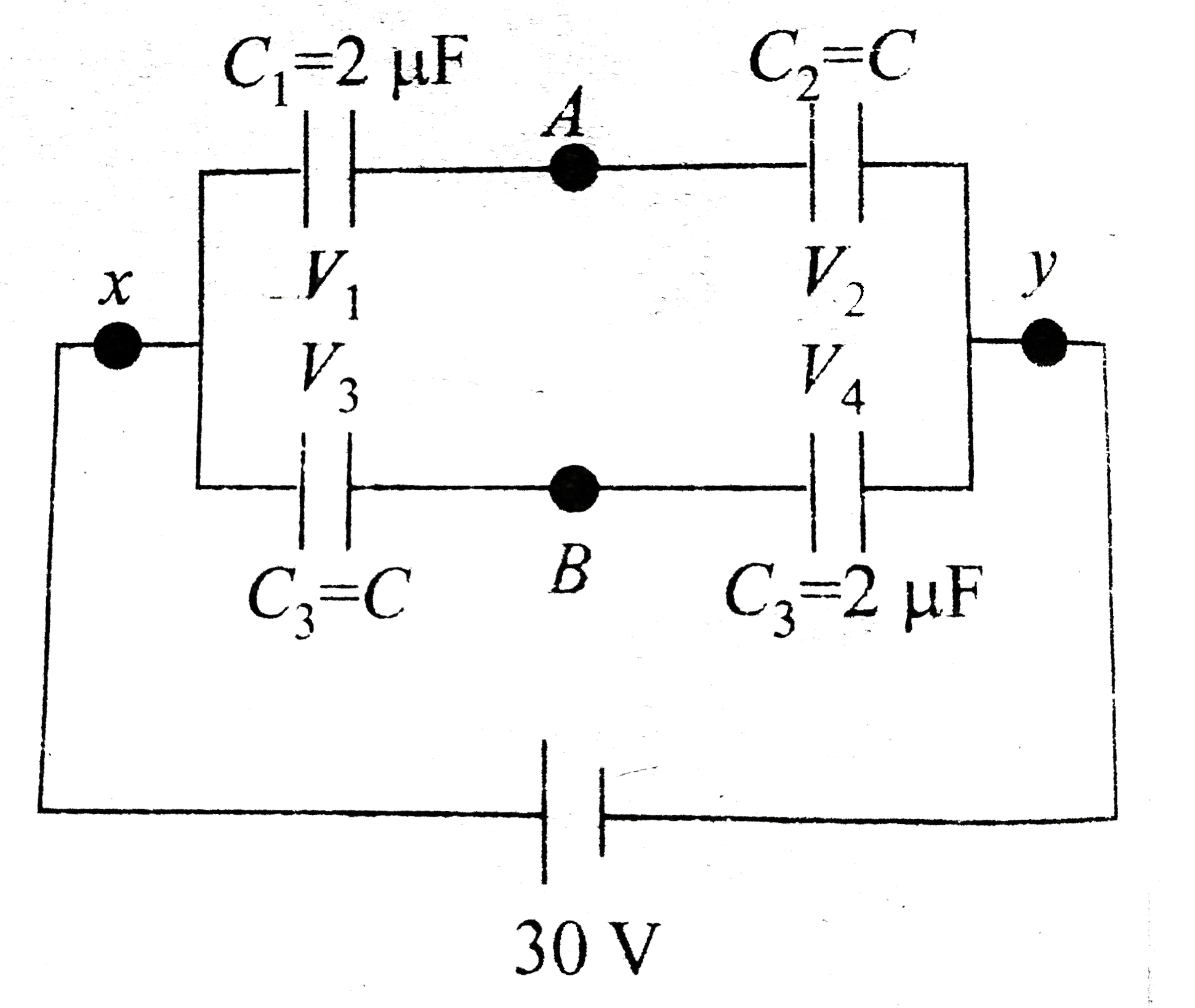 .
.
Charge on capacitor `C_(1)` is.02:05View Solution
 .
.
Let us now connect two more capacitors in the circuit. One of them, `C_(5)`, is connected in the part of the circuit between `x` and `A`. It connected between either in series or in parallel with `C_(1)`. The other, `C_(6)`, is connected between `A and B`. It is observed `x and y` has the the same value `C_(5)` is.
Capacitance `C_(5)` is.04:28View Solution
 .
.
Let us now connect two more capacitors in the circuit. One of them, `C_(5)`, is connected in the part of the circuit between `X` and `A`. It connected between either in series or in parallel with `C_(1)`. The other, `C_(6)`, is connected between `A and B`. It is observed `X and Y` has the the same value `C_(5)` is.
Capacitance `C_(5)` will be.View SolutionShows a diagonal symmetric arrangement of capacitors and a battery. Identify the correct statements.
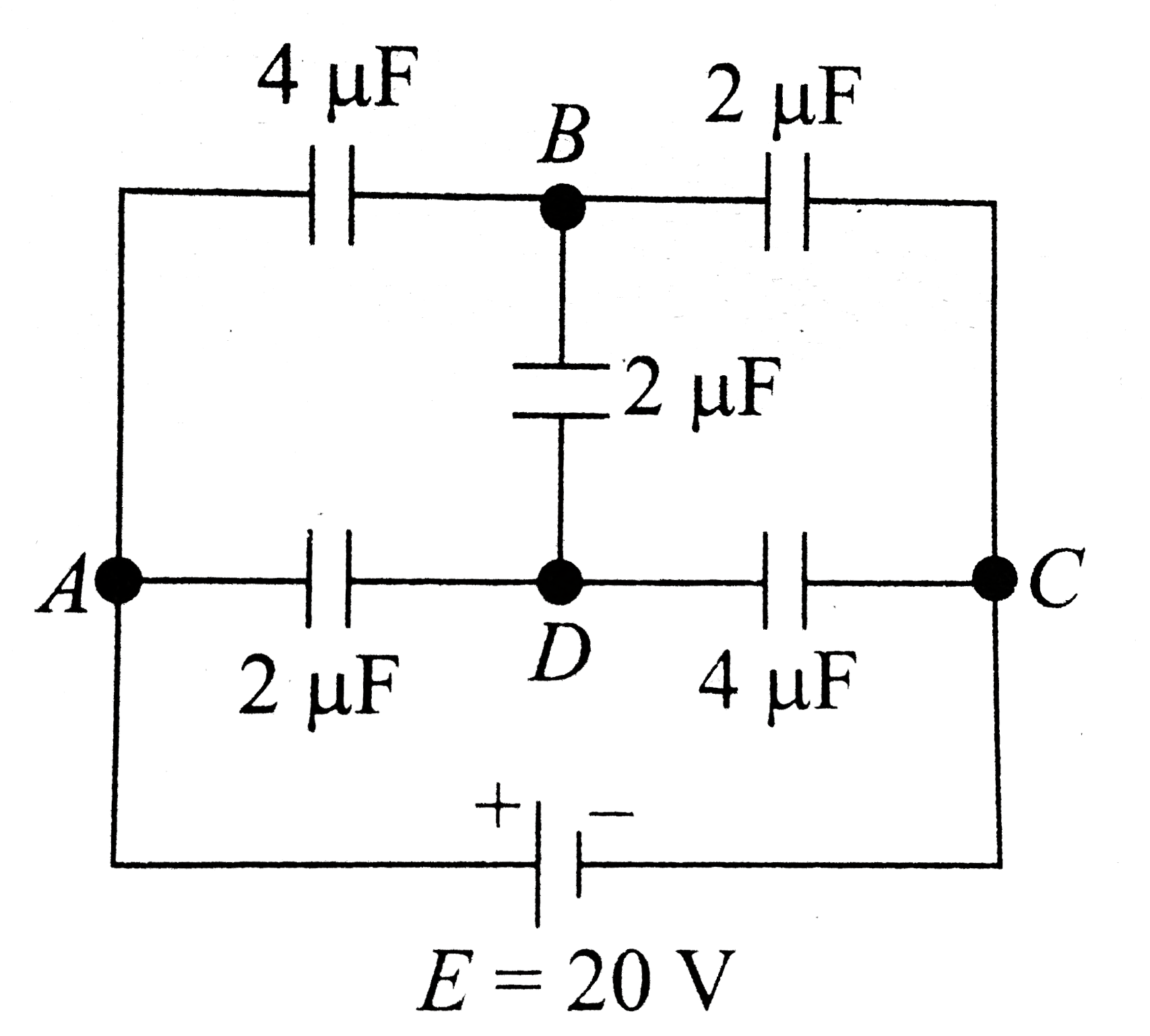 .
.
05:50View SolutionShows a diagonal symmetric arrangement of capacitors and a battery.
 .
.
If the potential of `C` is zero, then identify the incorrect statement.04:15View Solution
Comprhension questions and complete solutions for chapter CAPACITOR AND CAPACITANCE of CENGAGE PHYSICS (HINGLISH) of Class 12
